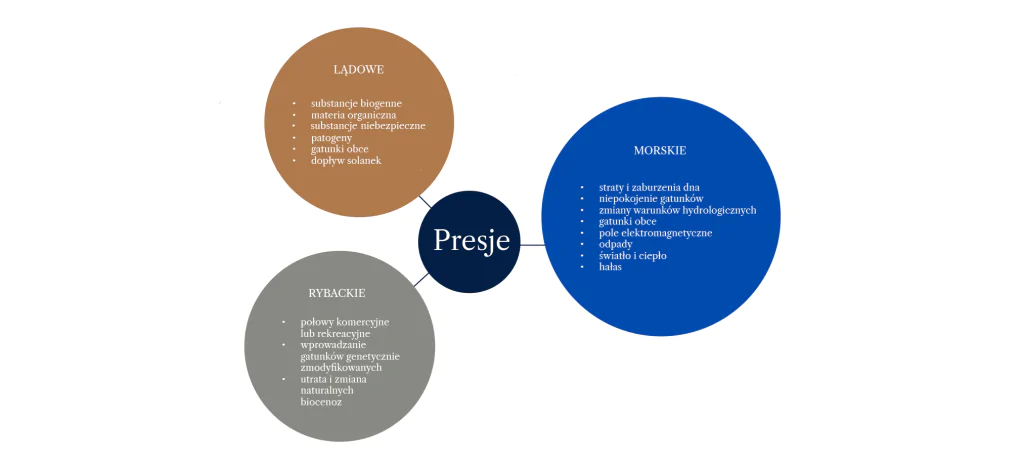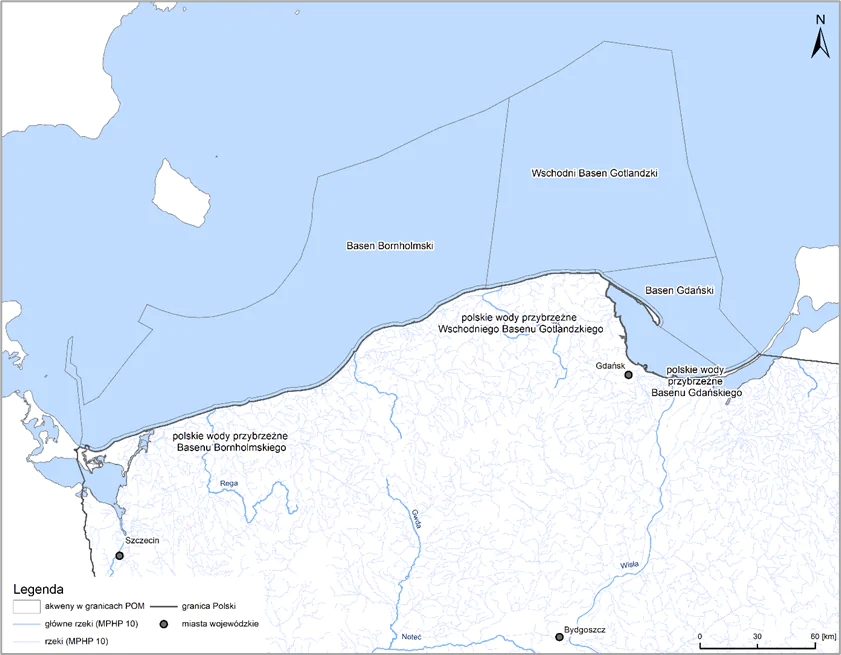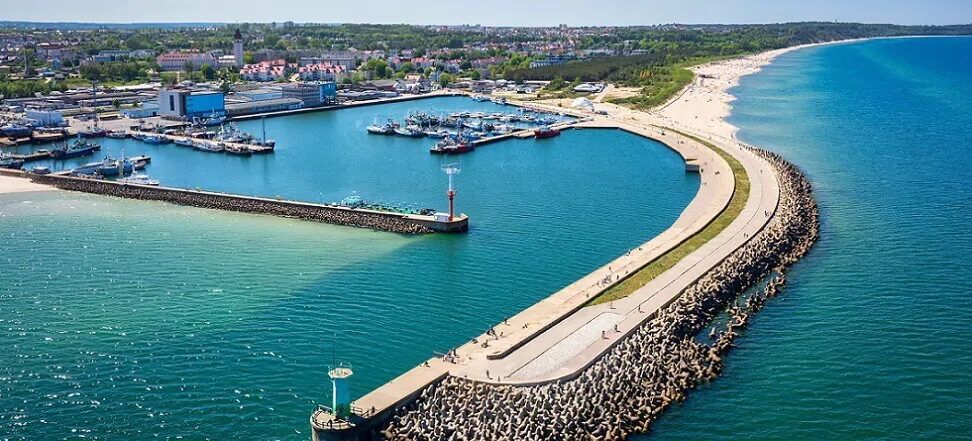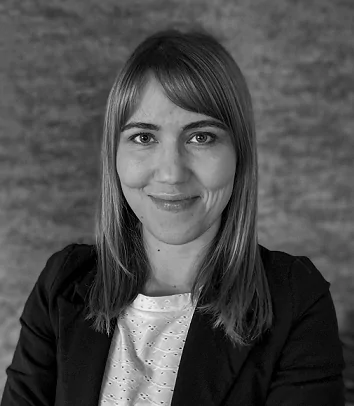Feedback
Marine pressures – who determines them and how?
Human activities affect the surrounding environment through numerous pressures. This is happening not only on land, but also in marine areas. To be able to effectively protect the sea, these pressures must first be properly recognized. Within the European Union since 2008. On the maritime strategy, the so-called. Framework Directive (MSFD), which establishes the limits within which member states shall take the necessary steps to achieve or maintain good ecological status of the marine environment. The directive was implemented into Polish law in 2013. The RDSM assumes that each member state prepares a preliminary assessment of the environmental status of marine waters, which should include an analysis of the prevailing pressures and impacts.
What elements does the analysis of pressures and impacts on marine waters include?
The provisions of the Water Law indicate what elements a complete analysis of prevailing anthropogenic pressures and impacts on marine waters should include. Importantly, the assessment is broken down into three main types of pressures – terrestrial, marine and those resulting from fishing activities. Their list is long and includes not only an inventory of substances entering marine waters, but also waste, noise, heat, light, bottom disturbance from ship traffic or fishing. It is impossible to list them all, so they are presented in a simplified way in the diagram below.

The characteristics of some of the pressures and their effects on marine organisms have already been partially presented in our previous articles: What are we stressing to the inhabitants of the Baltic Sea? and Why do seals become aggressive?
Who determines marine pressures and how?
The pressure analysis is carried out by each European Union member state, for its marine waters. The Polish maritime areas (POM) include internal marine waters, the territorial sea, the contiguous zone and the exclusive economic zone. This is a vast area, the extent of which is illustrated by the map below. The assessment of pressures and impacts is carried out for smaller units, the so-called. bodies of water, of which six have been designated for the Baltic Sea POM.

Analysis of pressures and impacts is carried out periodically. Work is currently underway to summarize the years 2016 – 2021. The first step in the ongoing work is to identify and characterize the sources of pressure, and then assess its intensity, according to the adopted scale. Subsequently, the magnitude of the impact of each analyzed factor on individual elements of the Baltic ecosystem (which include, for example, benthic habitats, marine mammals, fish spawning grounds, Natura 2000 protected habitats, marine vegetation) is estimated, and the work is carried out in accordance with HELCOM methodology.
Pressures on marine waters vs. HELCOM
Our country is carrying out an analysis of pressures and impacts in relation to the various bodies of water in the Polish Baltic sea areas. This is one of the world’s most polluted seas, which has been monitored for many years as part of the activities of the Baltic Marine Environment Protection Commission (the so-called Helsinki Commission or HELCOM), established in 1974. Under the Helsinki Convention. Its signatories are the Baltic countries, and the main goal is to protect the Baltic Sea from all sources of pollution from land, air and sea, as well as to preserve biodiversity and promote the sustainable use of resources. HELCOM periodically develops holistic environmental assessments (HOLAS), and national analyses of the pressures and impacts of the Baltic Sea states should follow the methodologies developed within their framework.
We will soon know the complete results of the HOLAS 3 evaluation, which covered the years 2016 – 2021 with its analyses.
The methodology adopted by HELCOM assumes that the assessment of the impact of individual pressures on elements of the Baltic ecosystem is carried out using indicators of the sensitivity of a given ecosystem element to each pressure.
For example, the porpoise has the highest index of sensitivity to pressure such as impulse noise, i.e. it is the most vulnerable ecosystem element to this type of pressure. Zostera marina (seagrass) and productive surface waters are most sensitive to the negative effects of eutrophication. In contrast, physical changes to the seafloor do the most damage to bottom habitats and marine plants. After all unit analyses have been carried out, an assessment of cumulative impacts is made, which indicates which ecosystem elements are most vulnerable, taking into account all types of pressures.
What pressures dominate the Baltic?
For many years, pressure from nutrient inputs into the Baltic Sea, including in the POM, has definitely dominated, which is especially noticeable during the summer season on Polish beaches. Excessive nutrient input contributes to an increase in phytoplankton biomass, resulting in lower water transparency and the extent of the photic layer, with a number of negative effects on the marine ecosystem.
Between 2011 and 2016, according to HOLAS 2, at least 97% of the Baltic Sea was rated as zeutrophic. Despite a number of measures taken to reduce nitrogen and phosphorus inputs to waters, the first published results of HOLAS 3 indicate that eutrophication is still a serious problem in our sea and contributes to the degradation of many elements of this valuable ecosystem. We will still have to wait for the results of the measures taken so far.
It is important not only to continuously monitor the pressures that have been occurring for many years, but also to pay attention to the potential intensification of some of them (e.g., expansion of alien species, pathogens, increased disturbance of the seabed in case of intensification of ship traffic) and the occurrence of new pressures (resulting from the development of wind power). Proper identification of pressures will enable measures to be taken to reduce their negative impact on the marine environment.
In the article, I used, among others. From the works:
[1] HELCOM Thematic assessment of eutrophication 2016 – 2021
[2] http://stateofthebalticsea.helcom.fi/
[3] https://helcom.fi/baltic-sea-trends/holistic-assessments/state-of-the-baltic-sea-2023/
[4] Directive 2008/56/EC of the European Parliament and of the Council of 17 June 2008. Establishing a framework for Community action in the field of marine environmental policy (Marine Strategy Framework Directive)
[5] Law of July 20, 2017. Water Law (i.e., Journal of Laws 2022, item 2625, as amended).

 Polski
Polski







